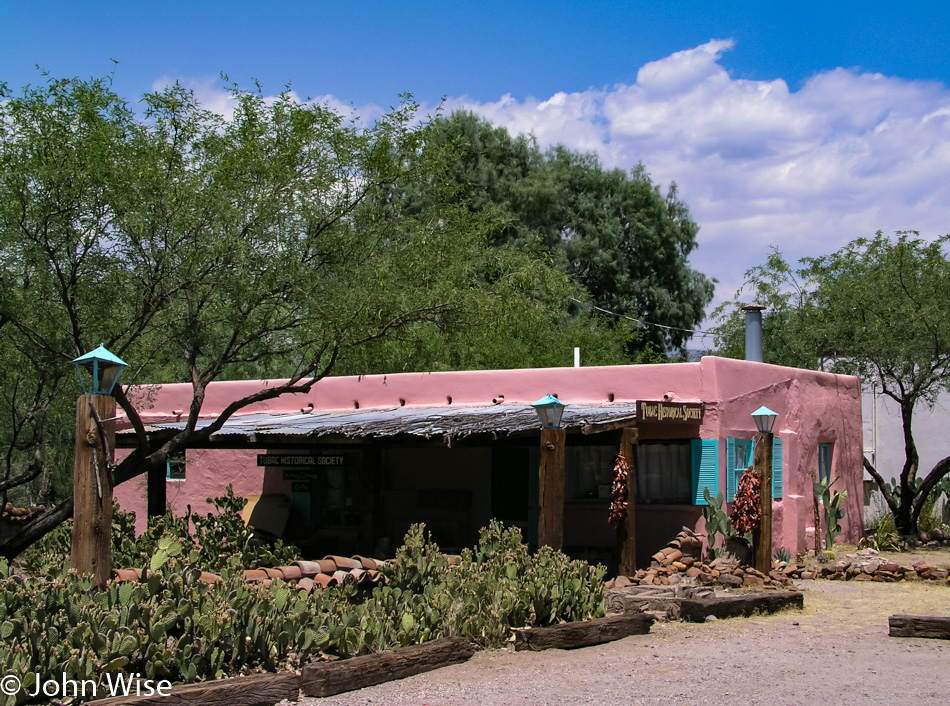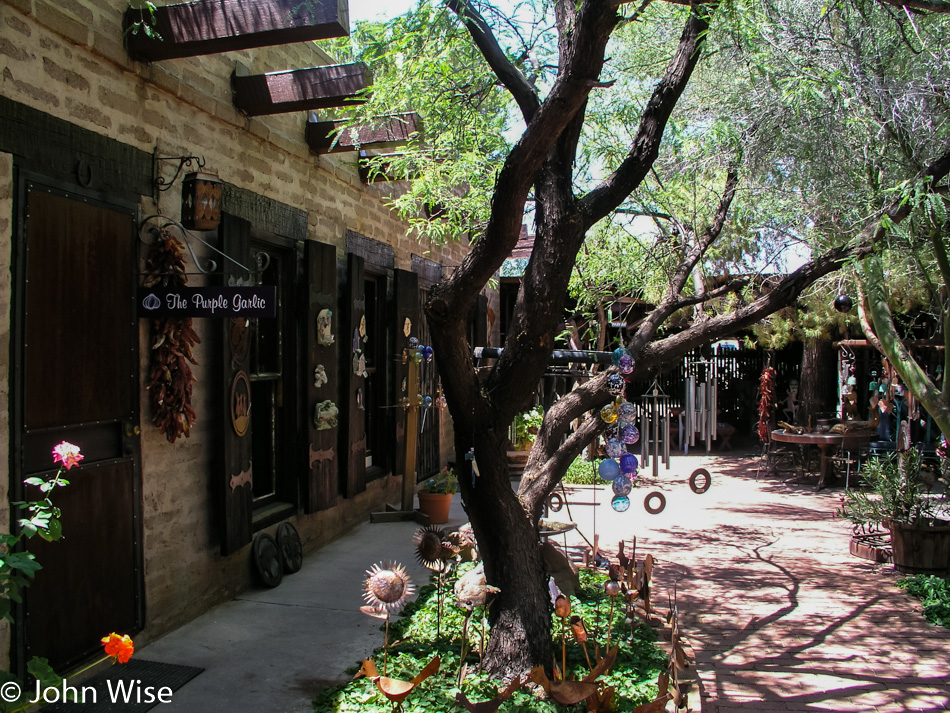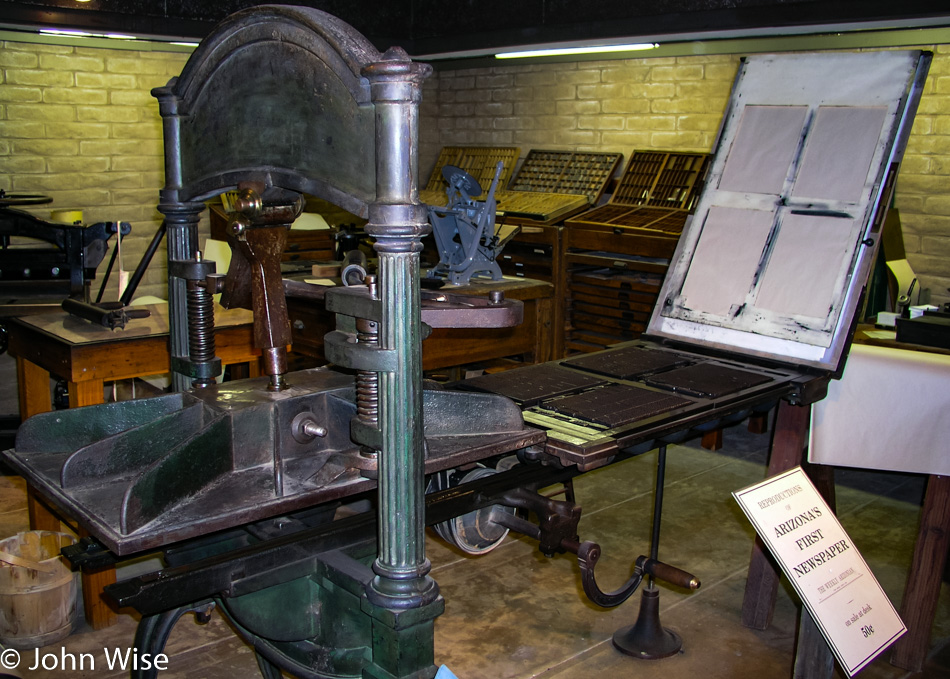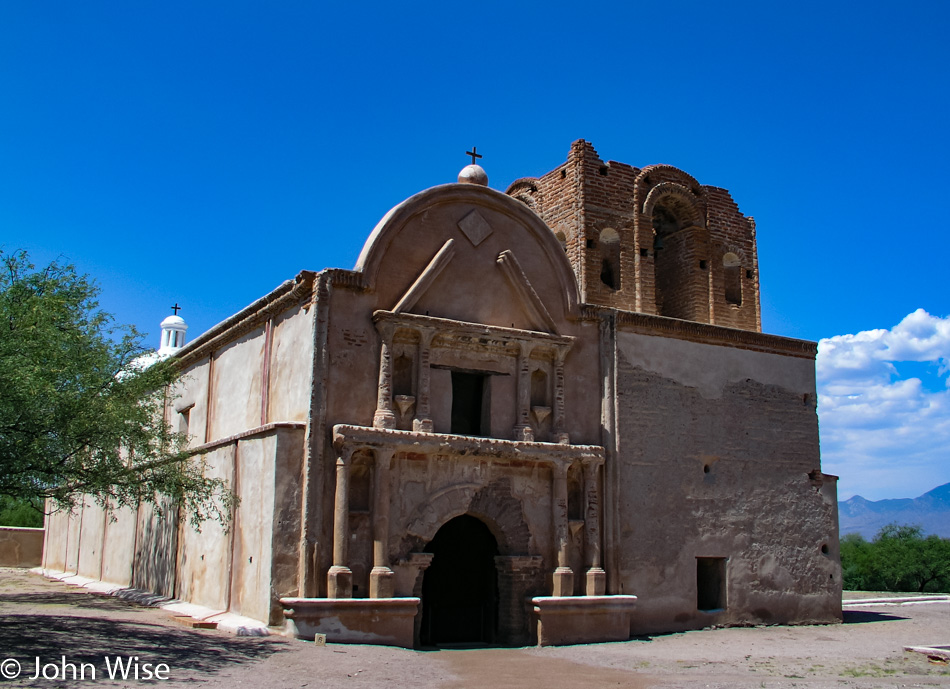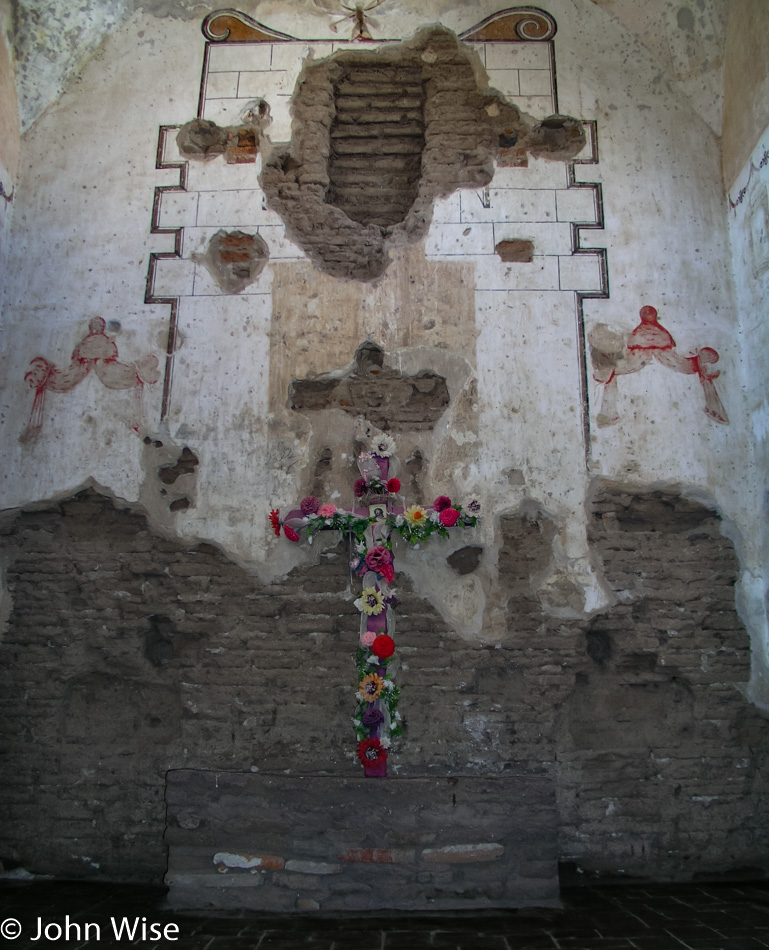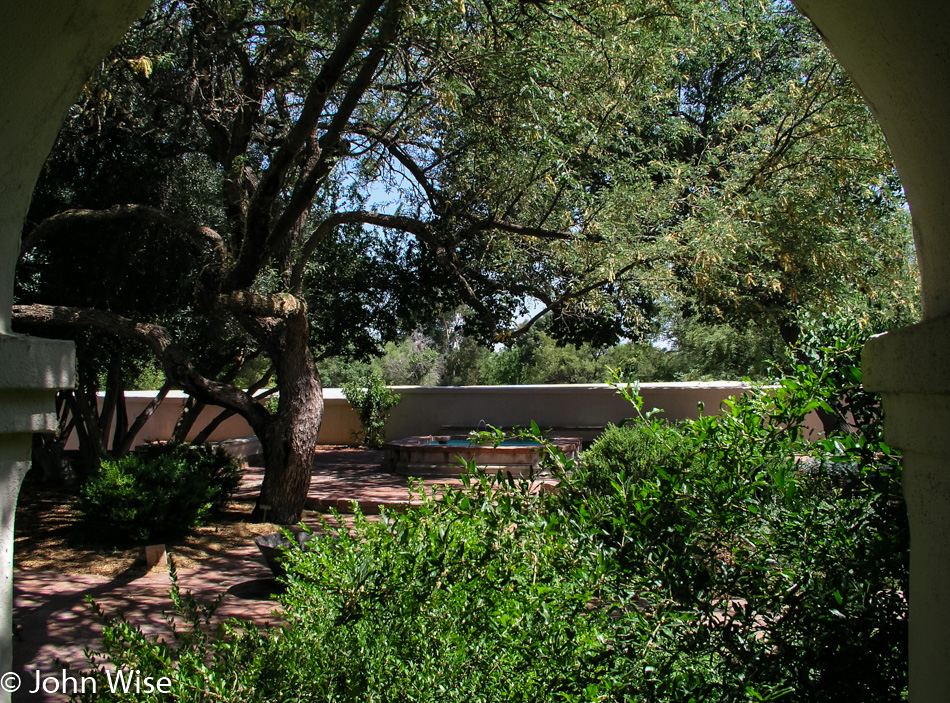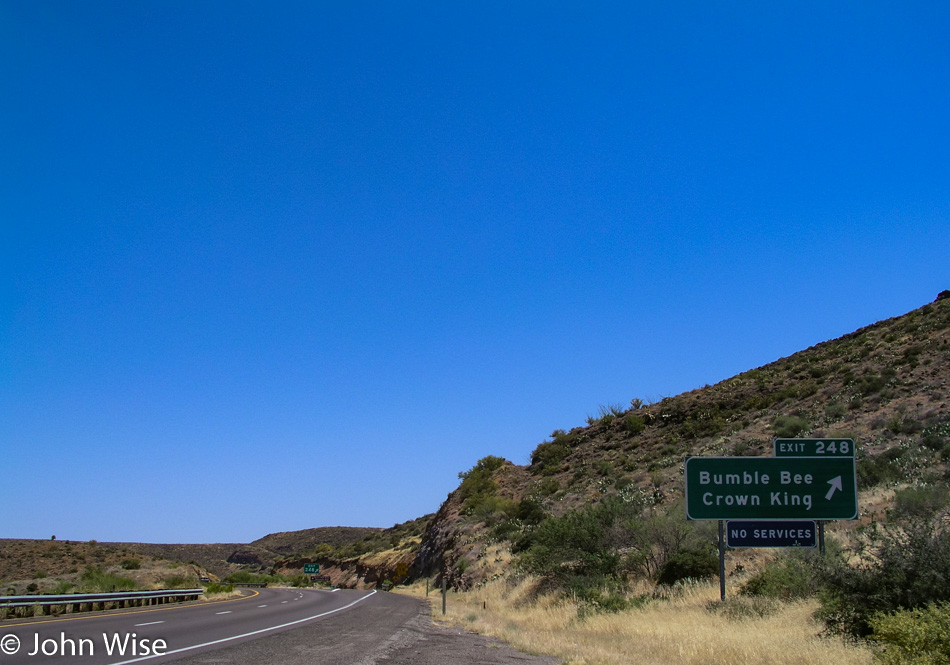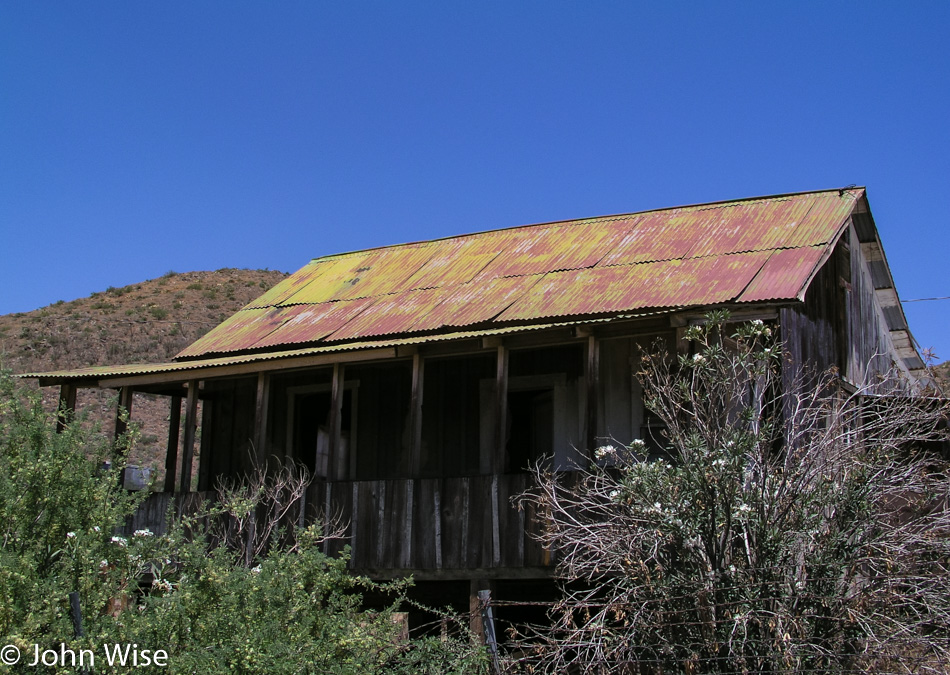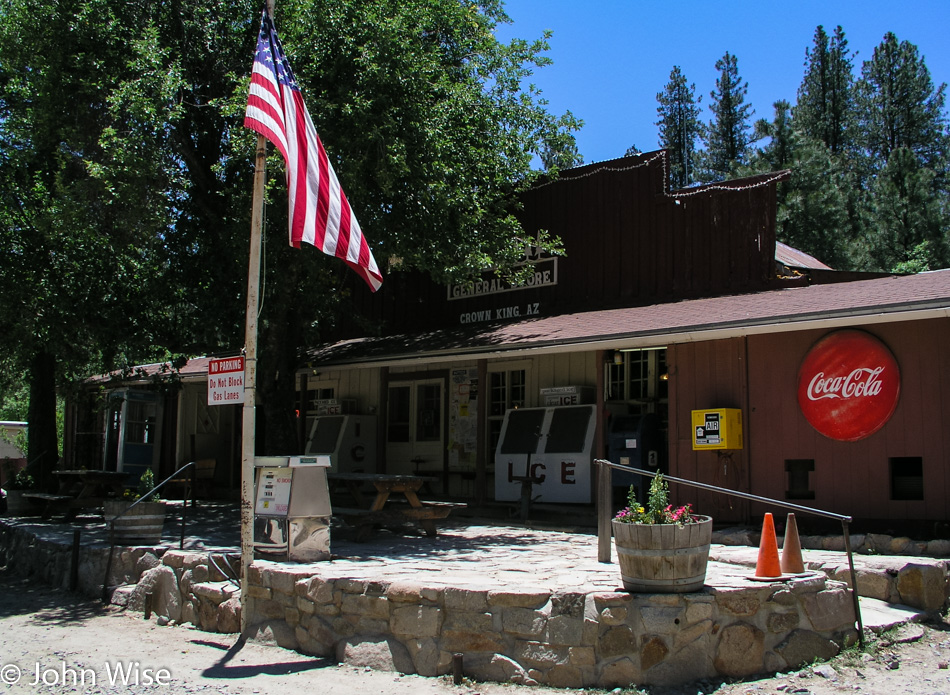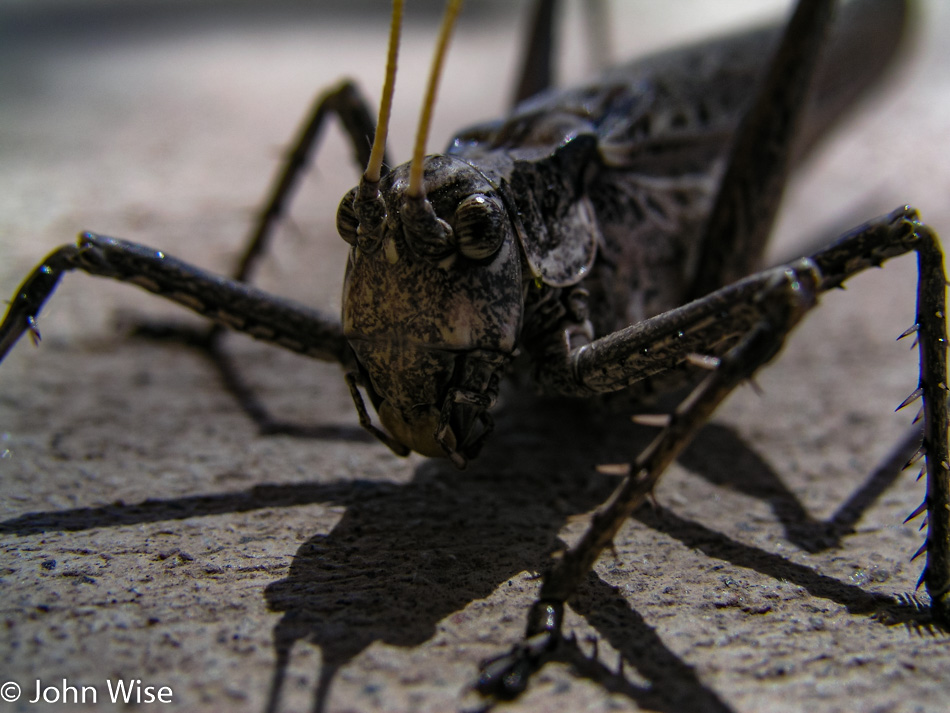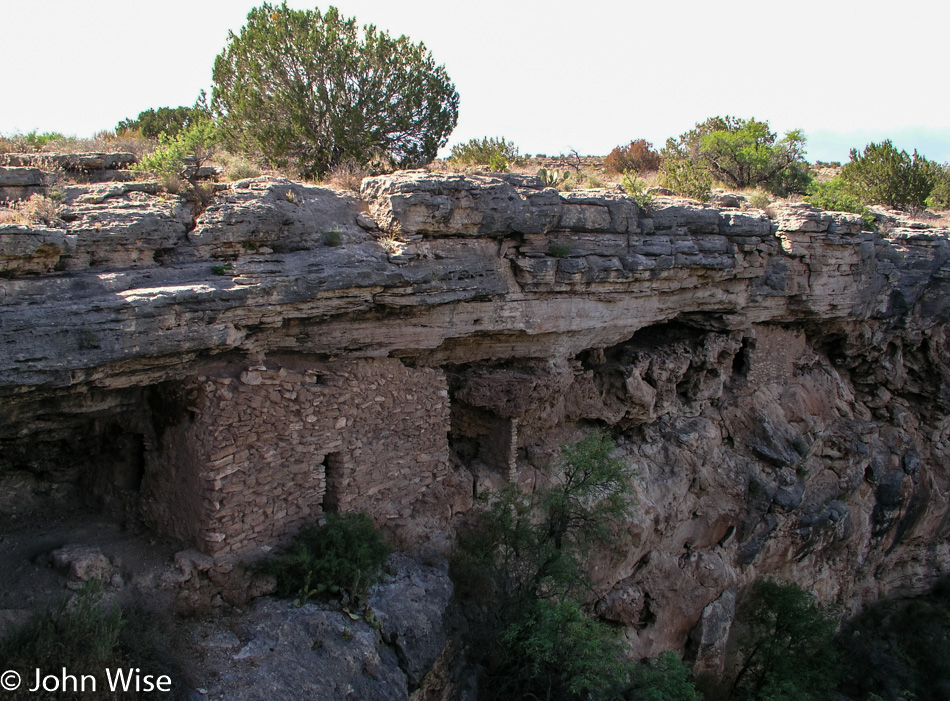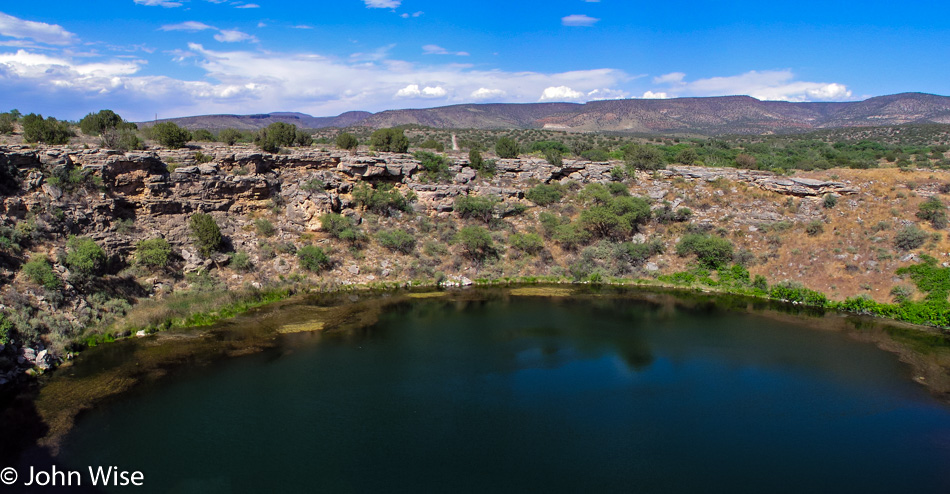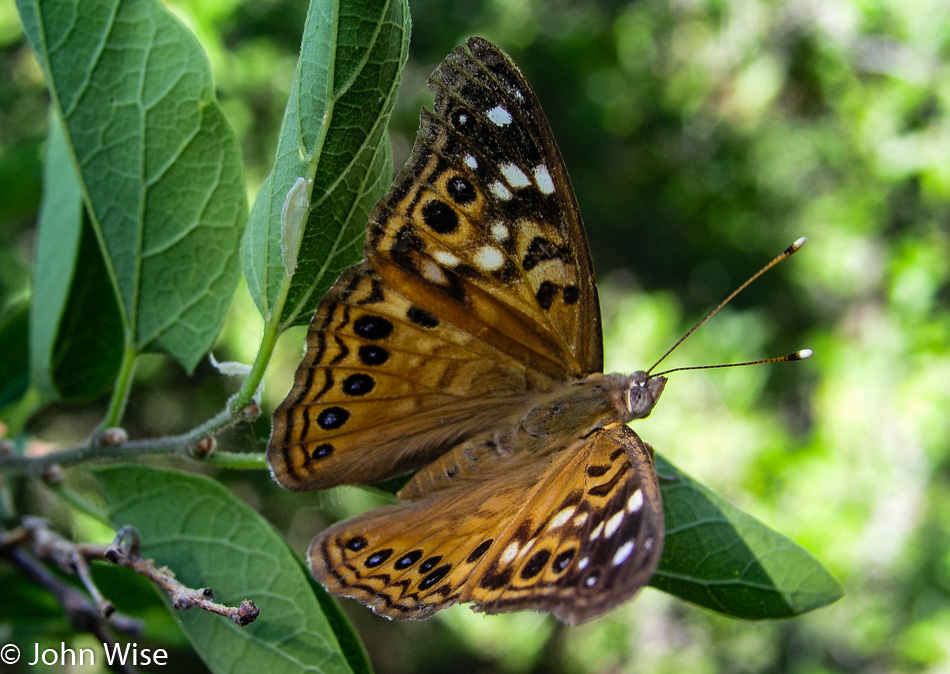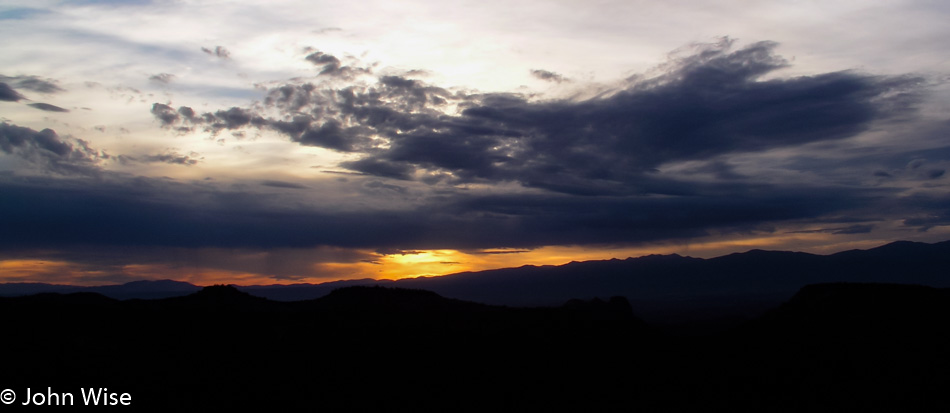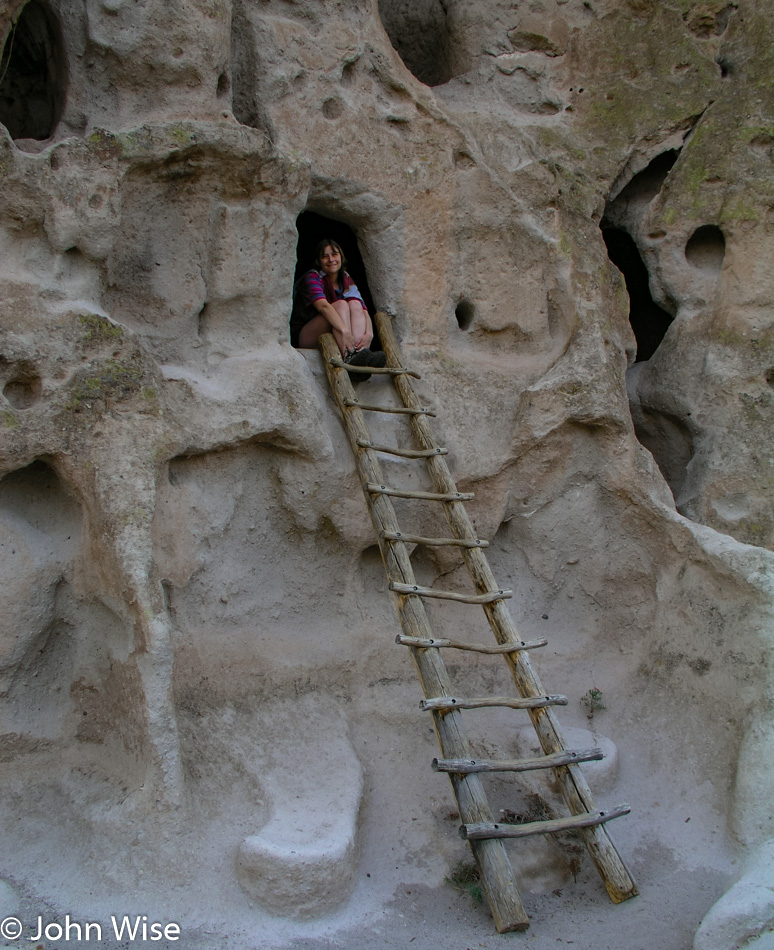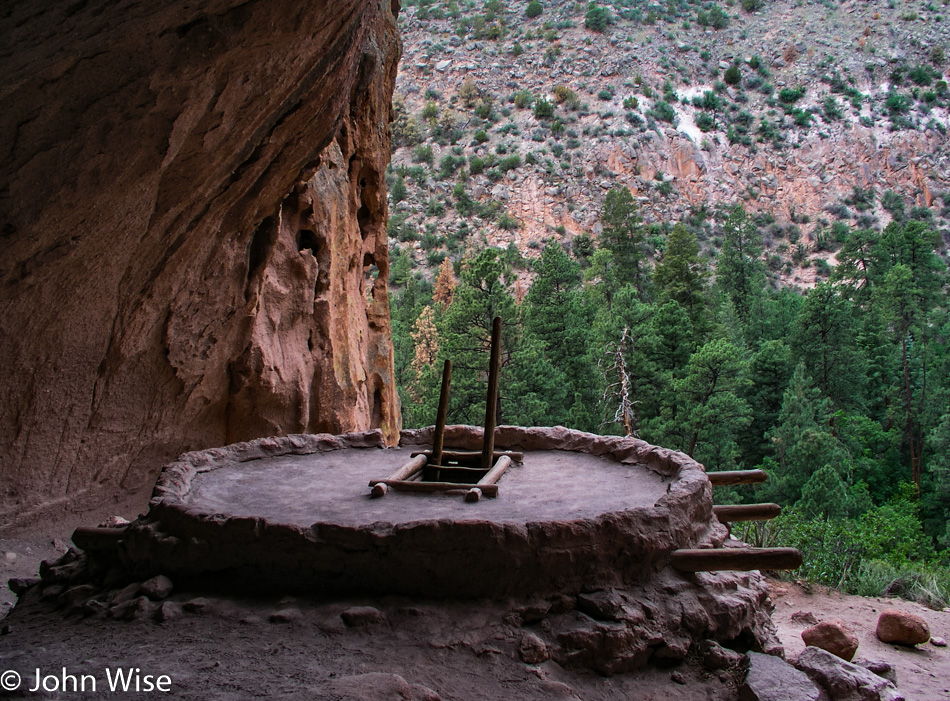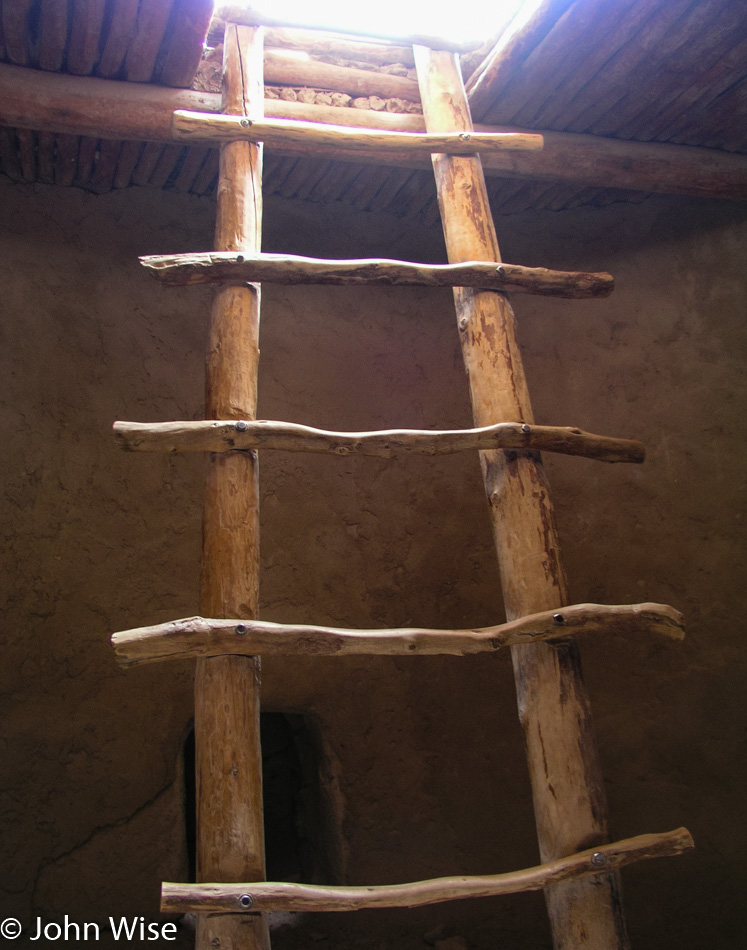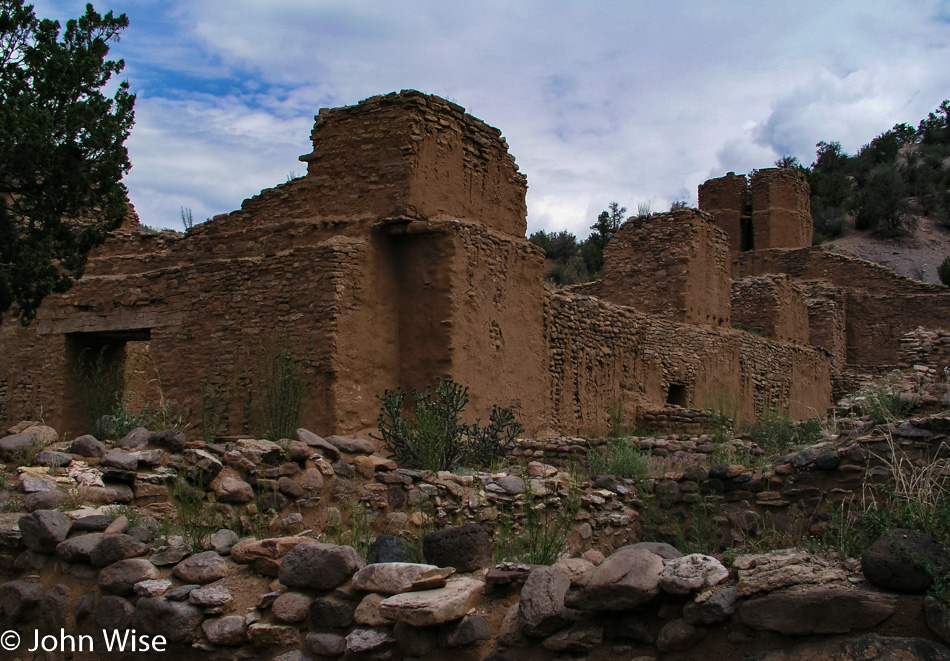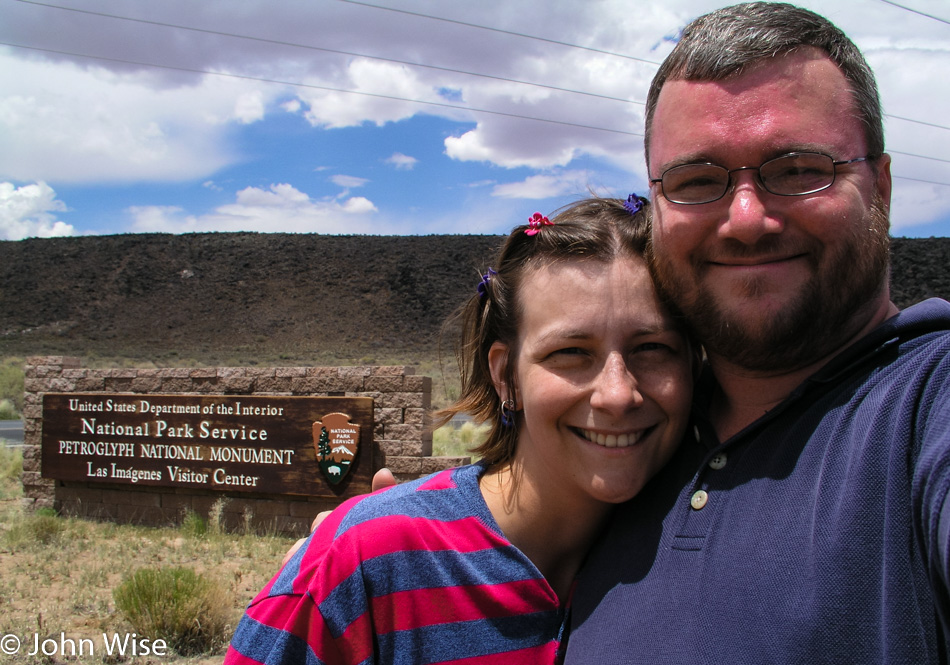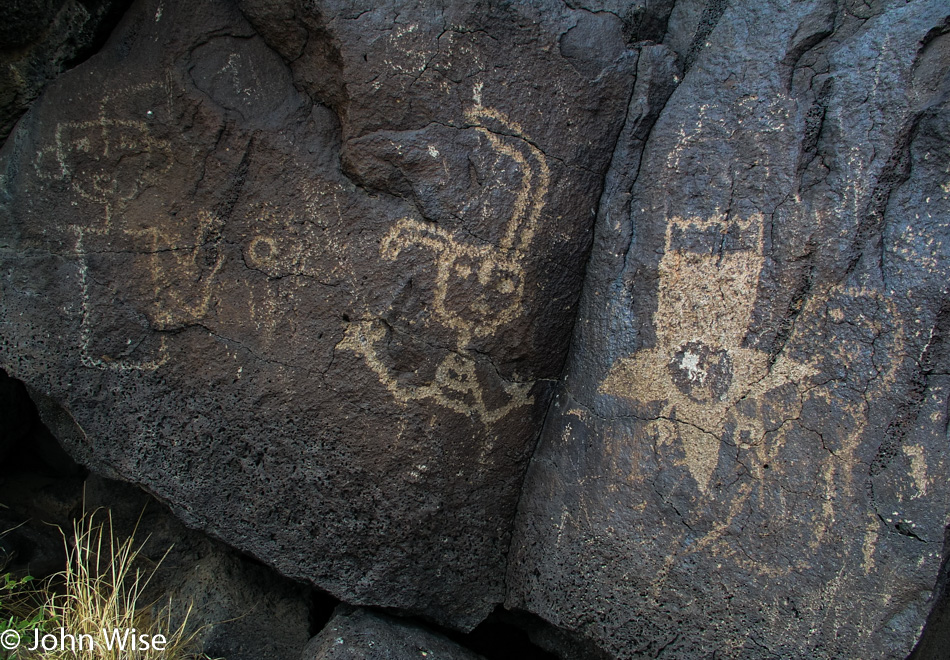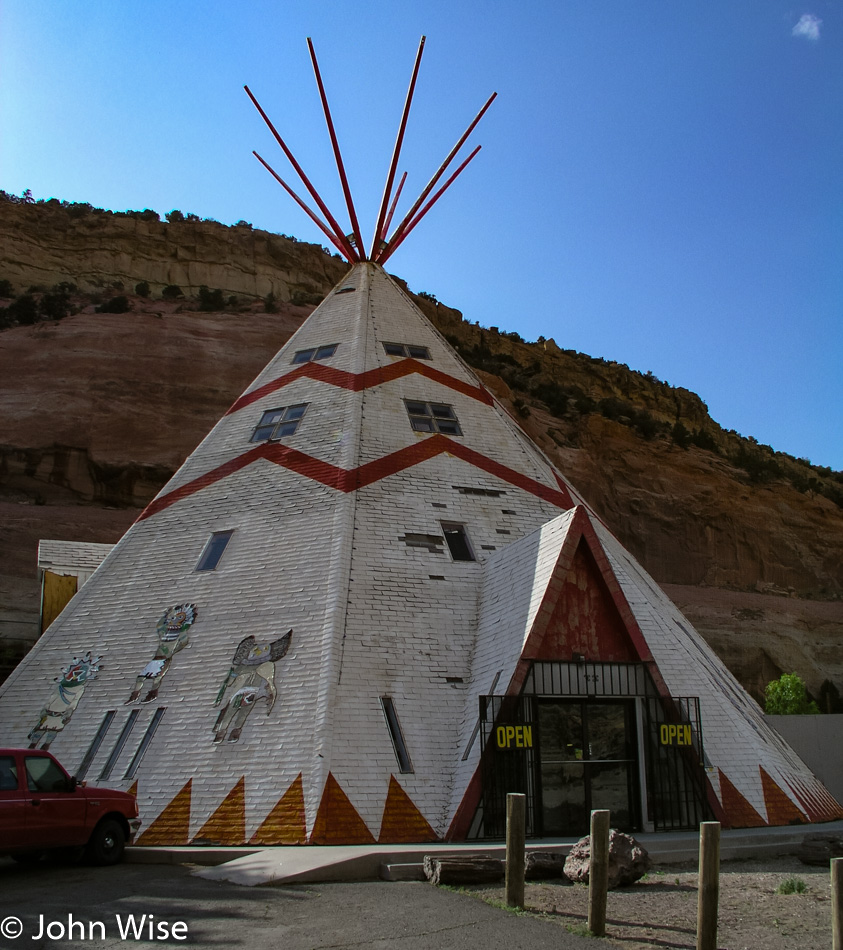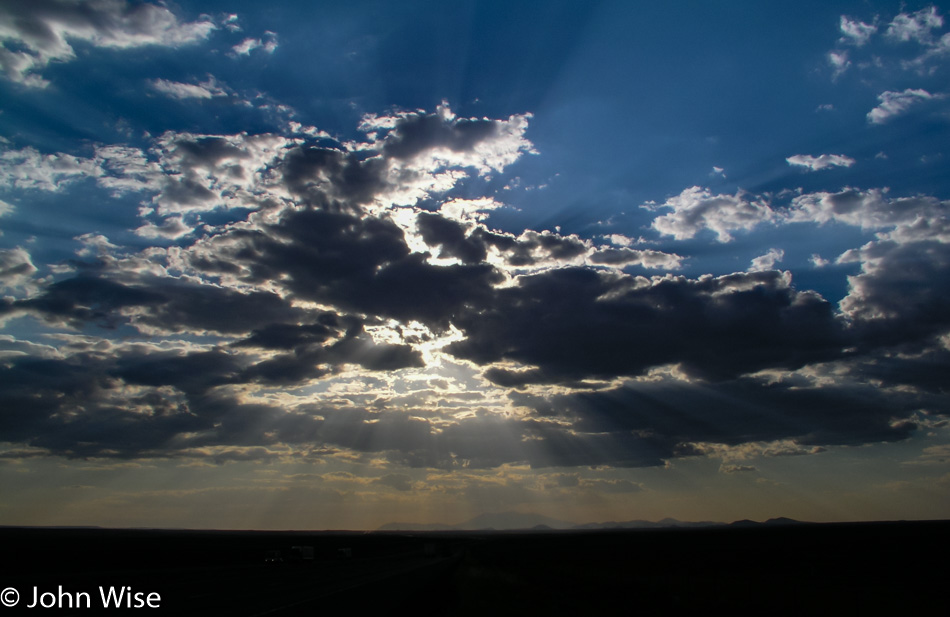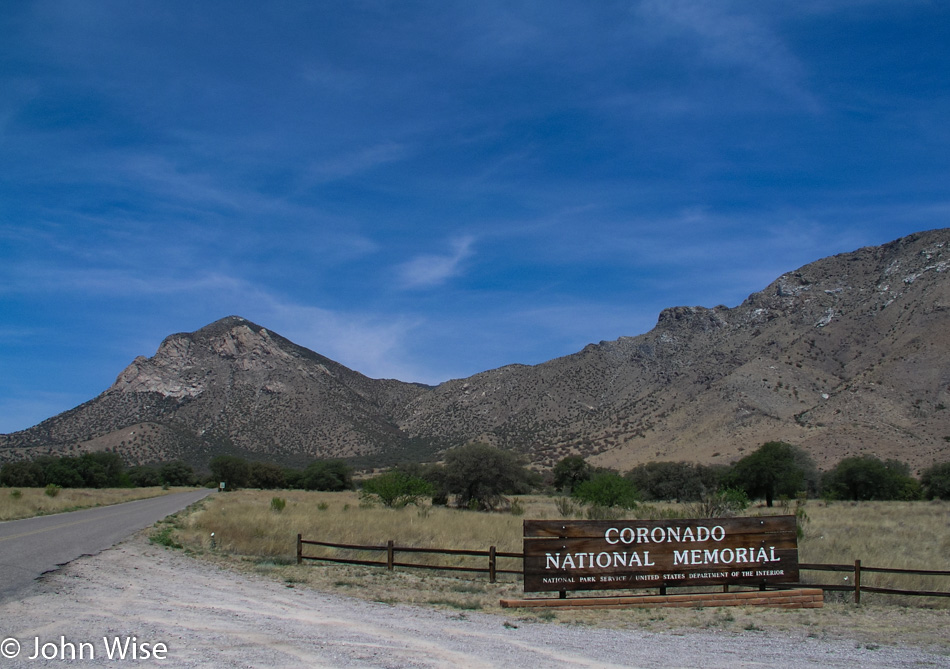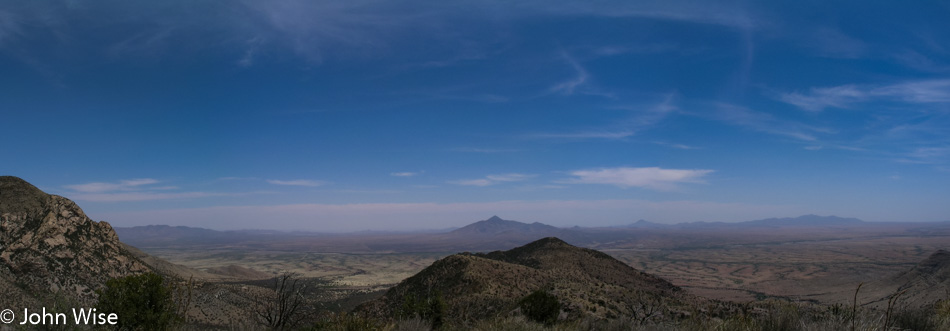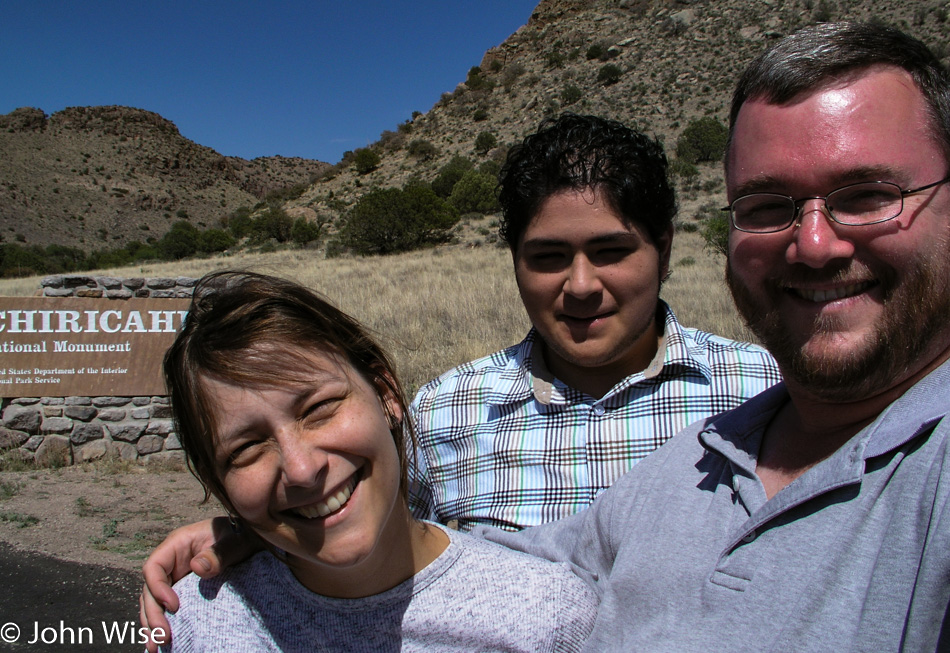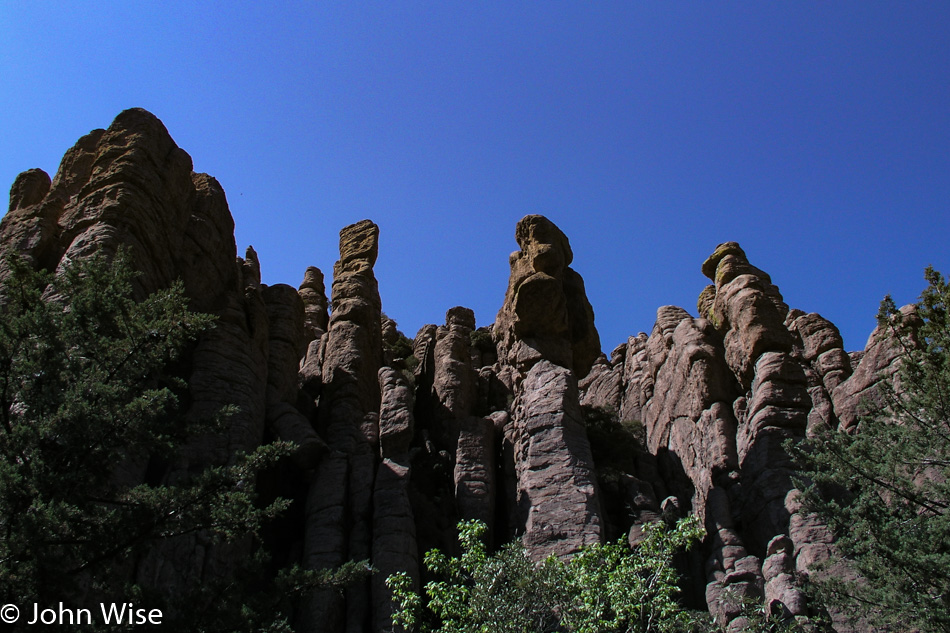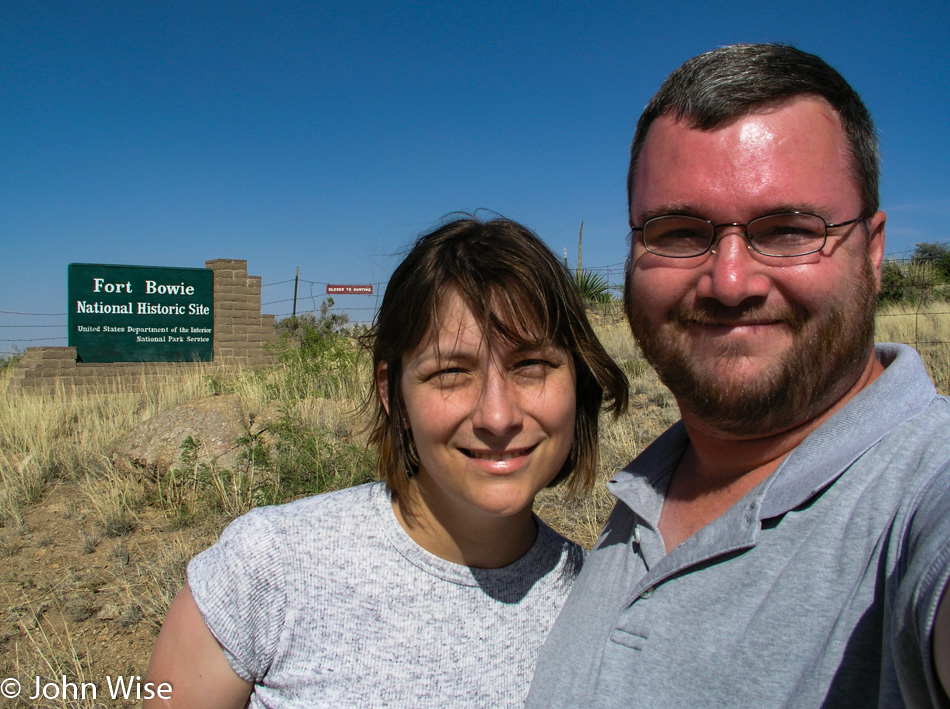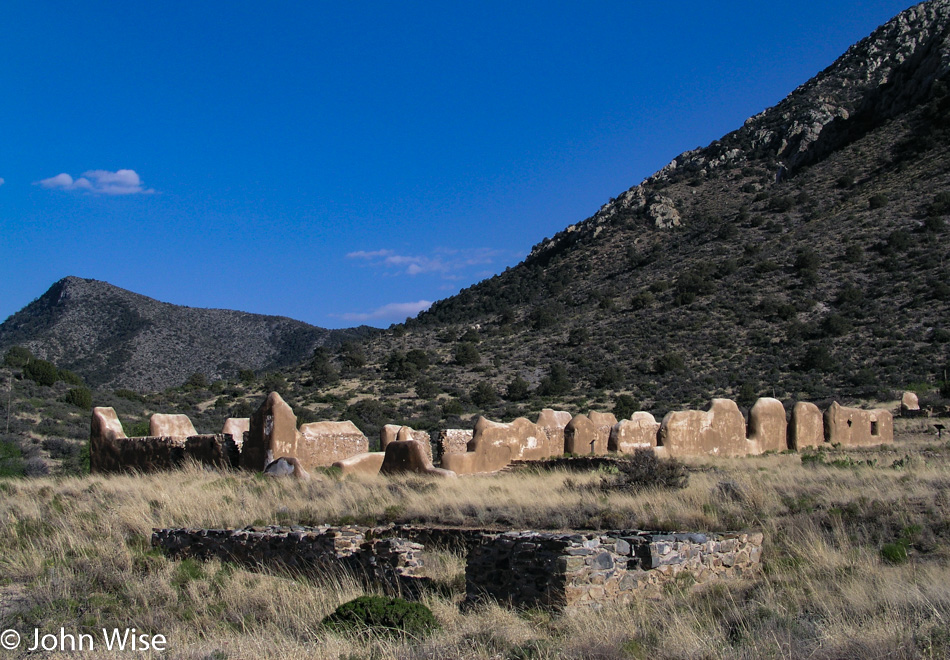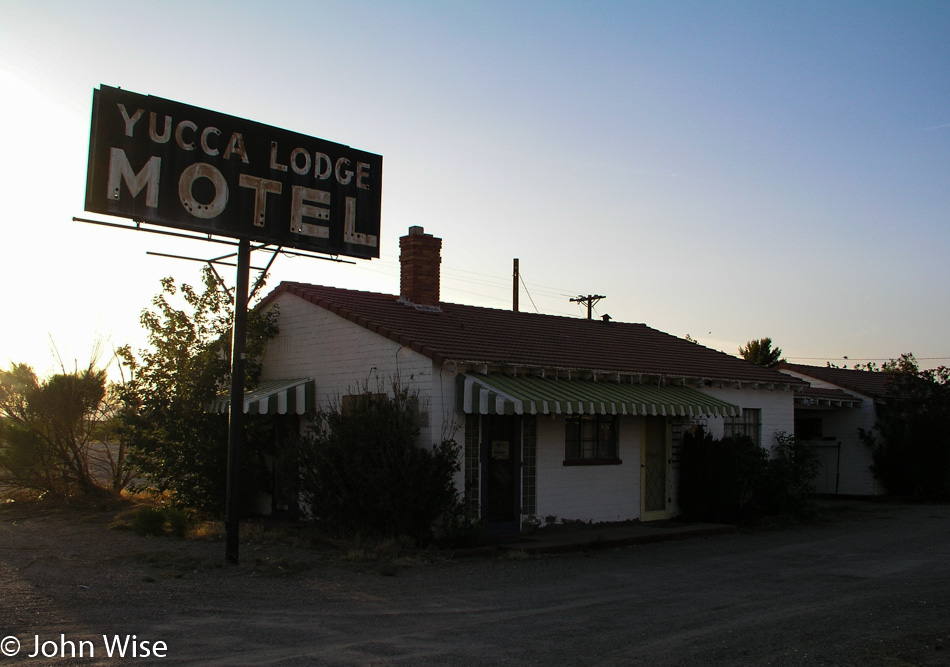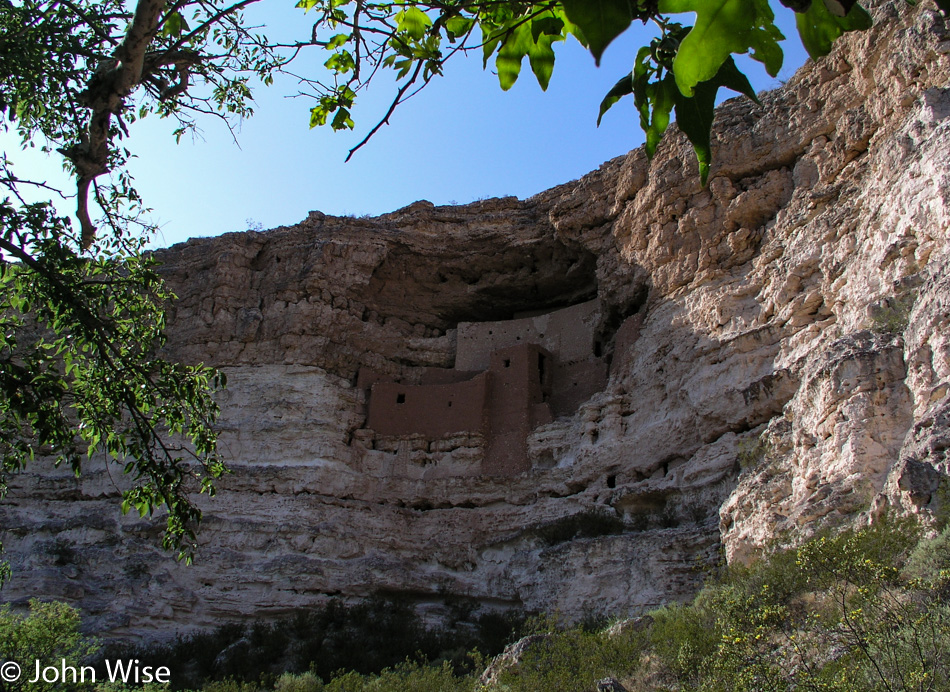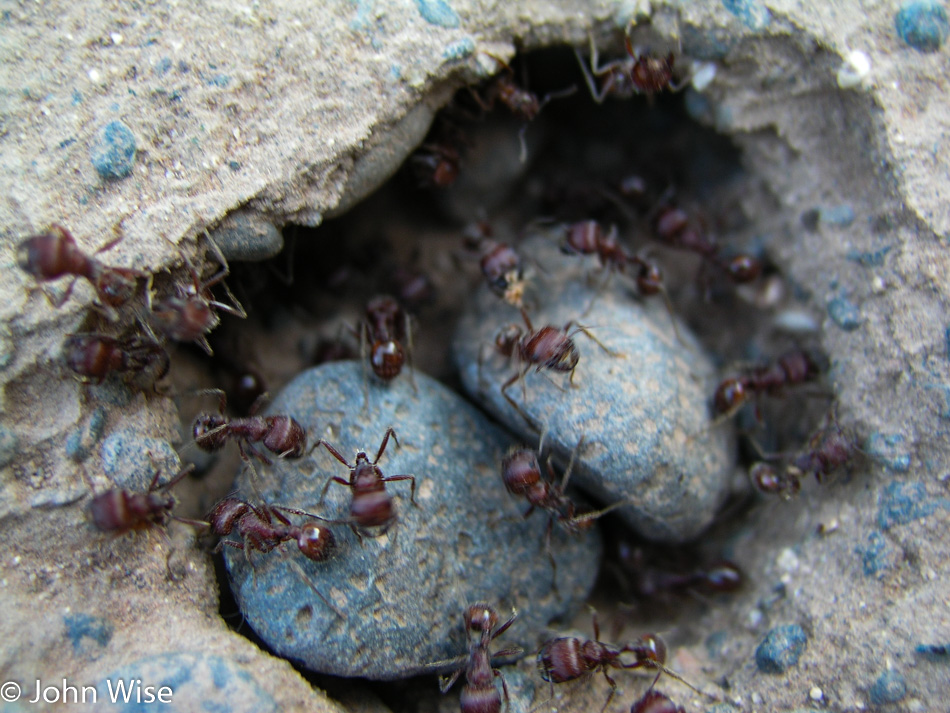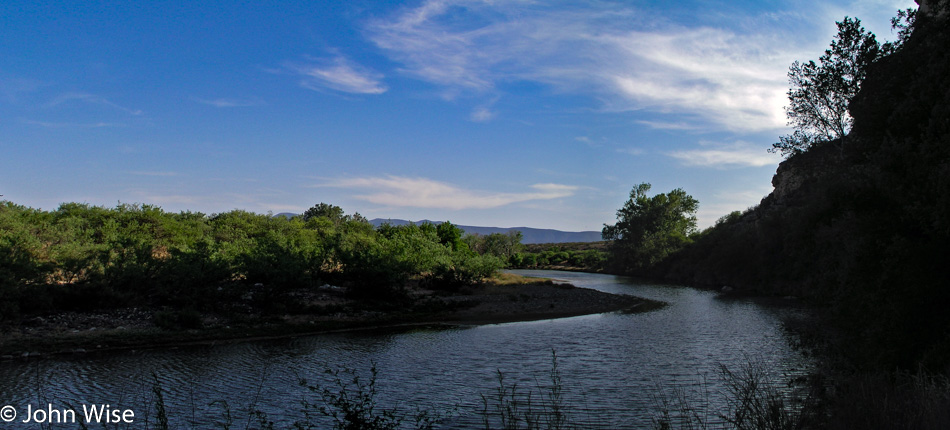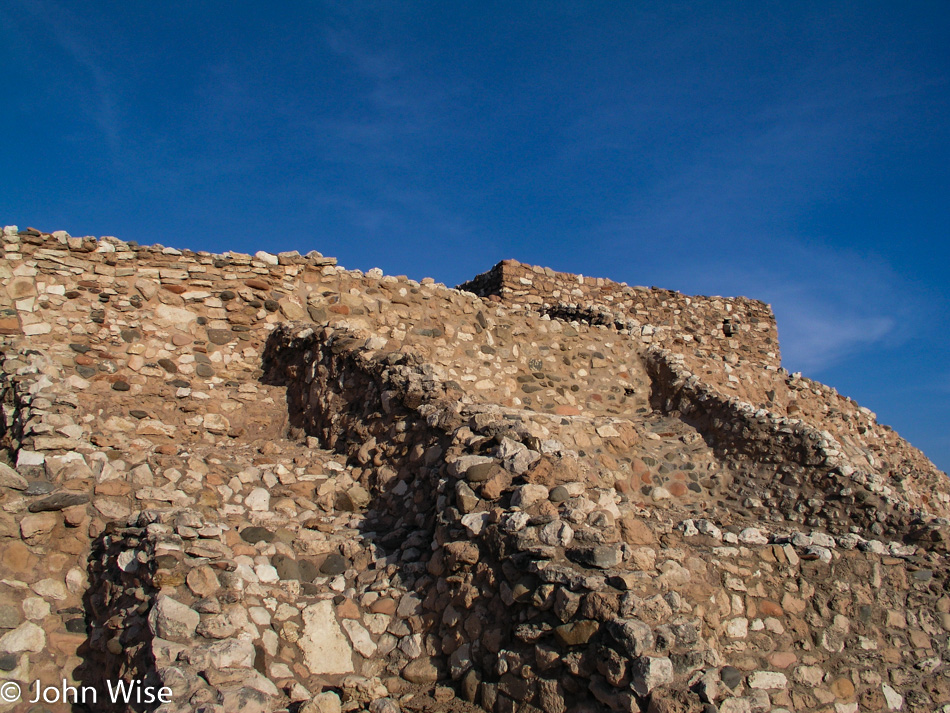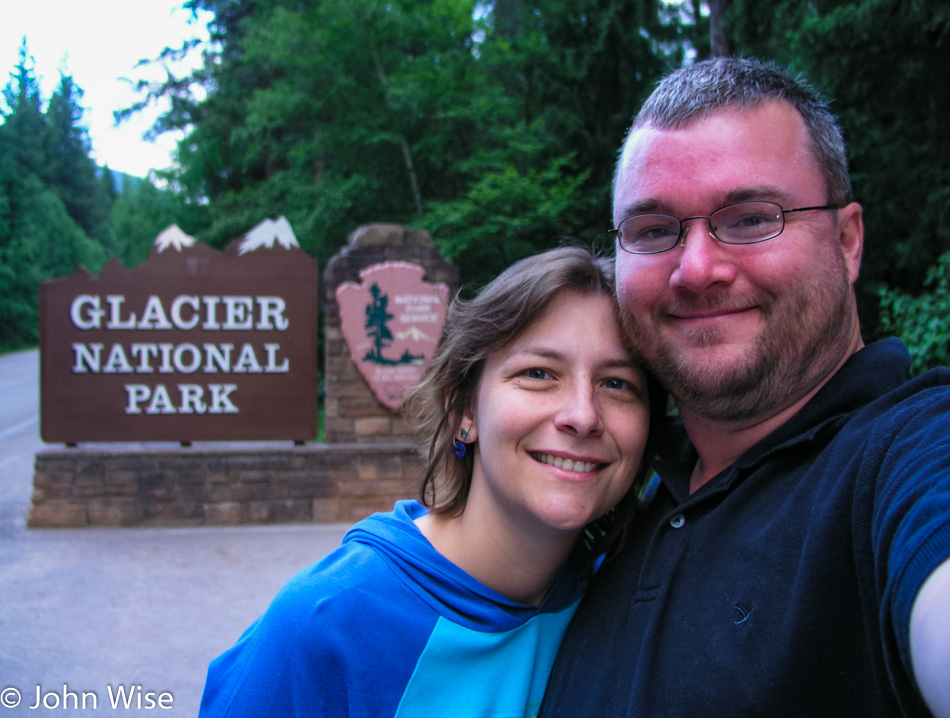
We are close to our destination of reaching the Canadian border, but we first have to deal with a National Park in our way and apparently also have to contend with an encounter with the sun.
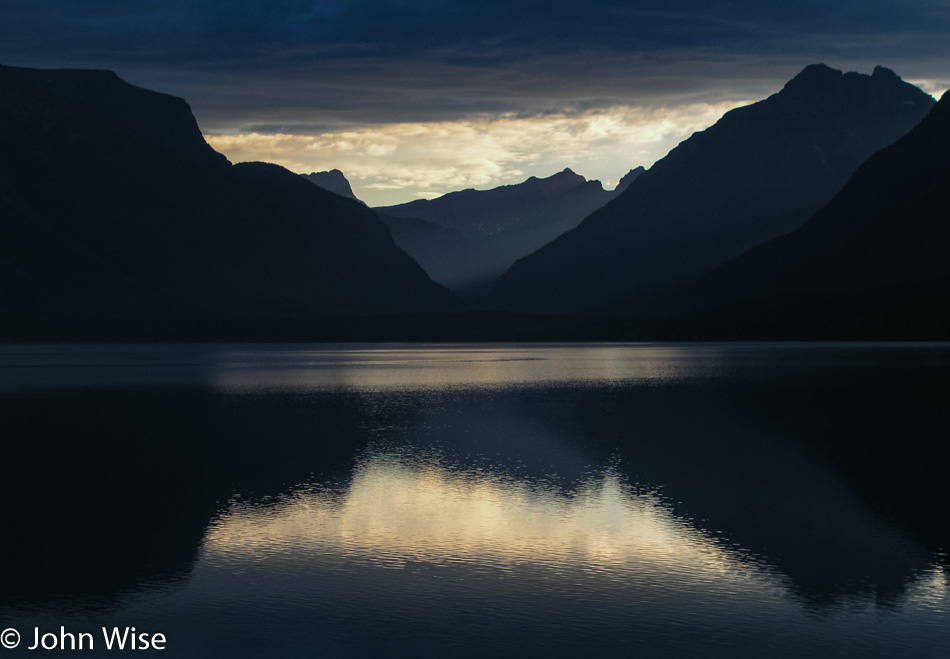
Going-to-the-Sun Road is an imaginatively named road that elicits dreams of moving into the heavens. First, we will have many miles that need to be covered to reach such lofty heights. Lake McDonald in the early morning makes for a beautiful sight.
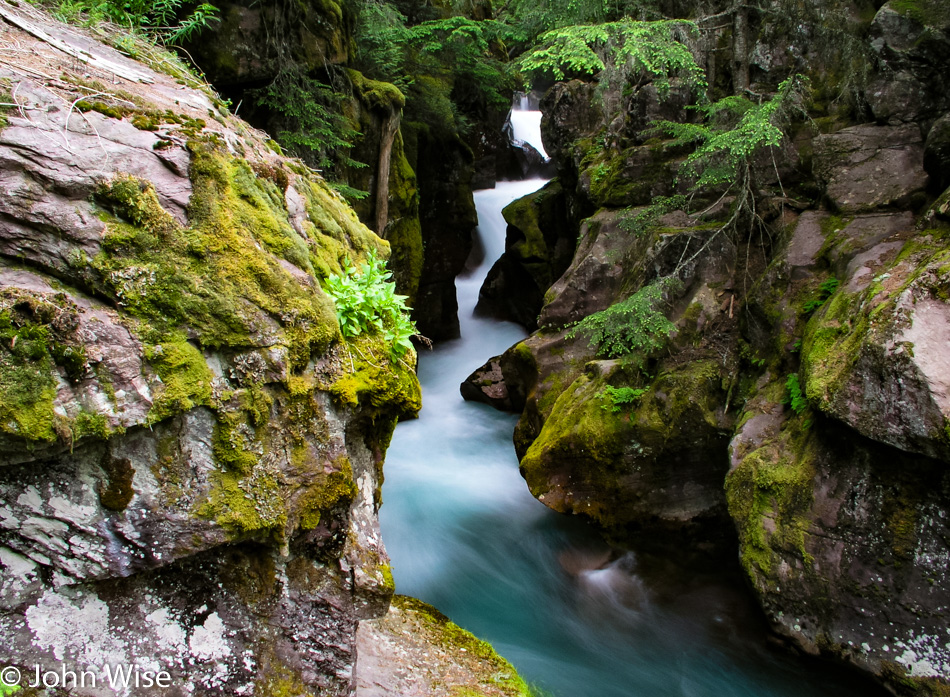
If we have to stop every five minutes to gawk at the scenery, we’ll never make it to either Canada or the Sun.
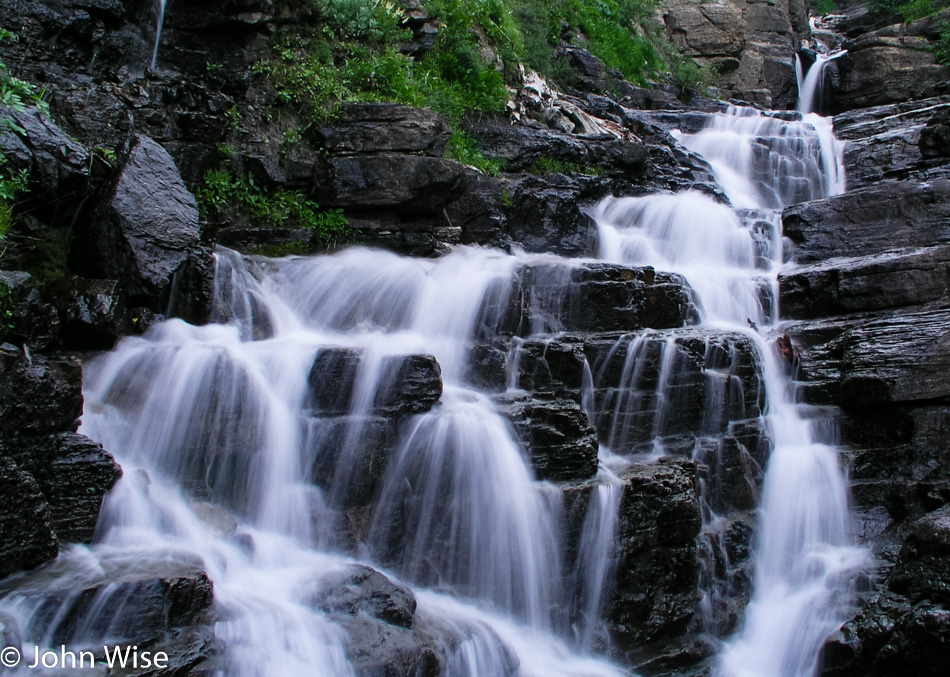
Where water flows, so do our emotions, and from them, an outpouring of not only love of place but the reinforcement of love between each other. Our profound luck to be first-hand witnesses to such spectacular places is a kind of magic we find inexplicable but will hopefully continue to experience well into the future.
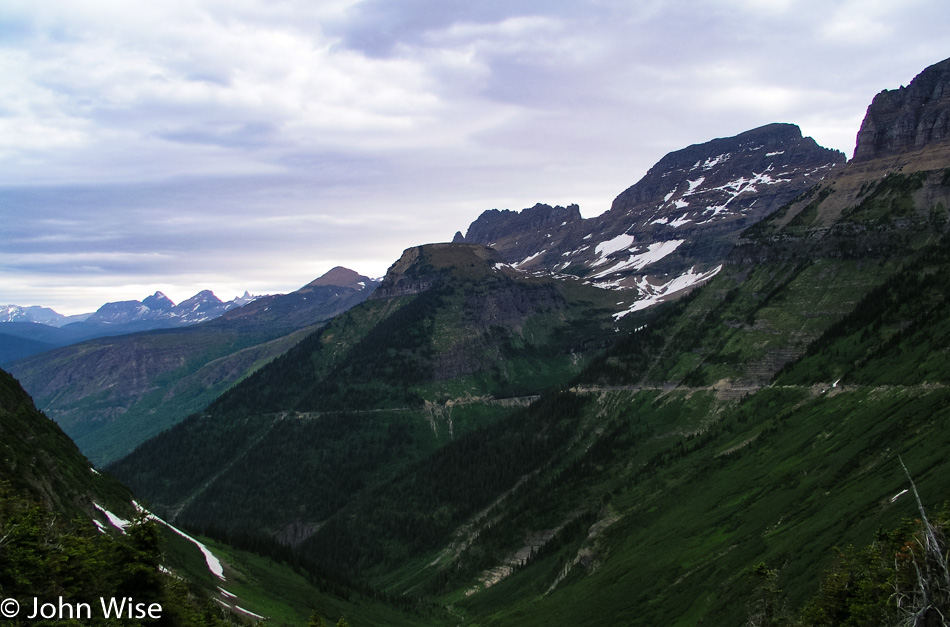
That tiny scar across those steep slopes is the road we’ve been traveling on our way to the Sun.
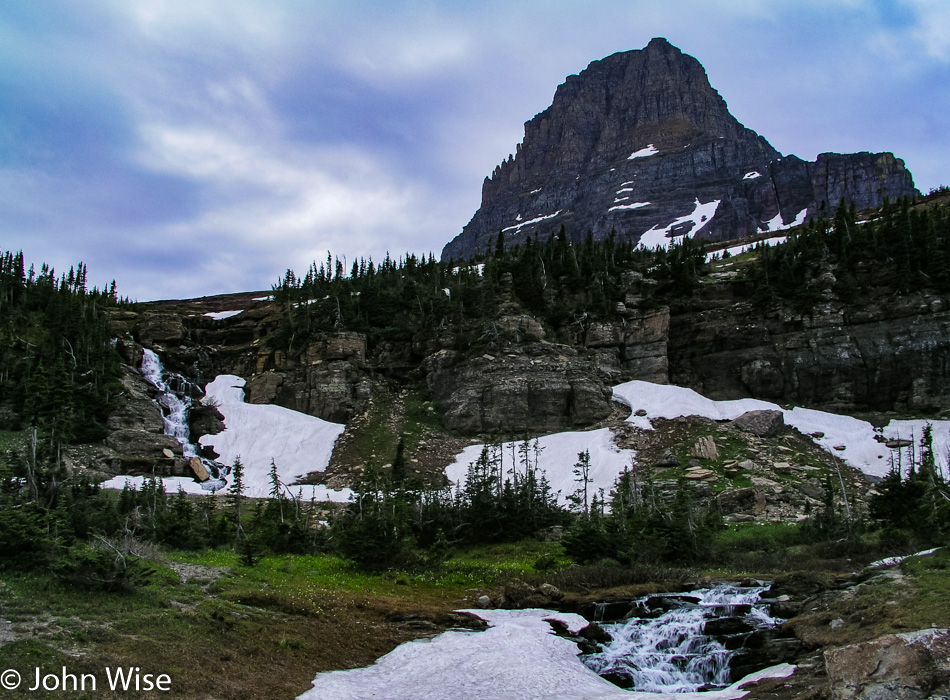
Wow, somebody broke out the beauty stick and beat this part of the Earth hard.
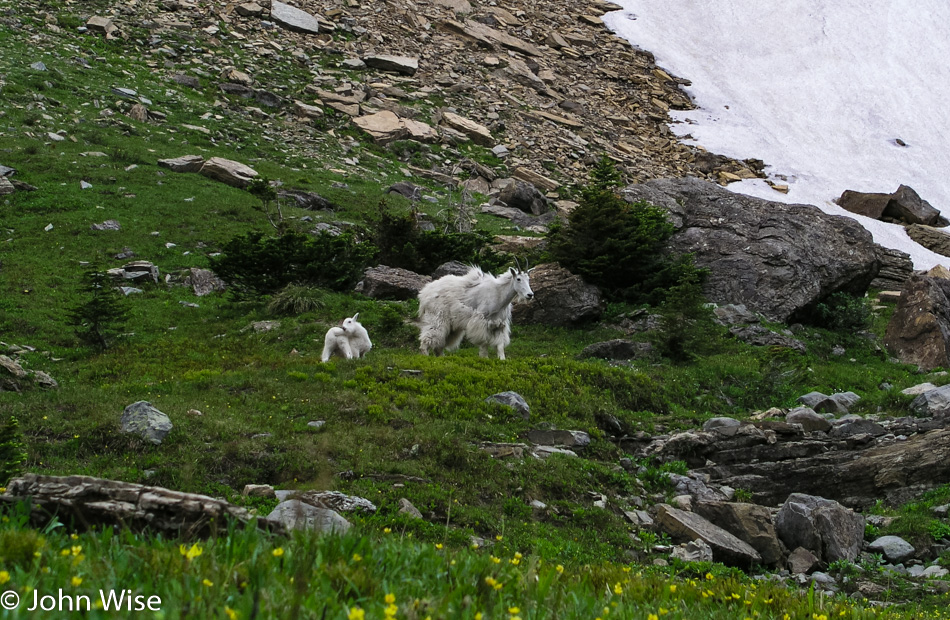
I can’t help but see momma goat on the right seeming to be stepping out of her winter coat. At this point, we were on the other side of the Logan Pass Visitor Center, starting our exploration of the eastern side of Glacier National Park.
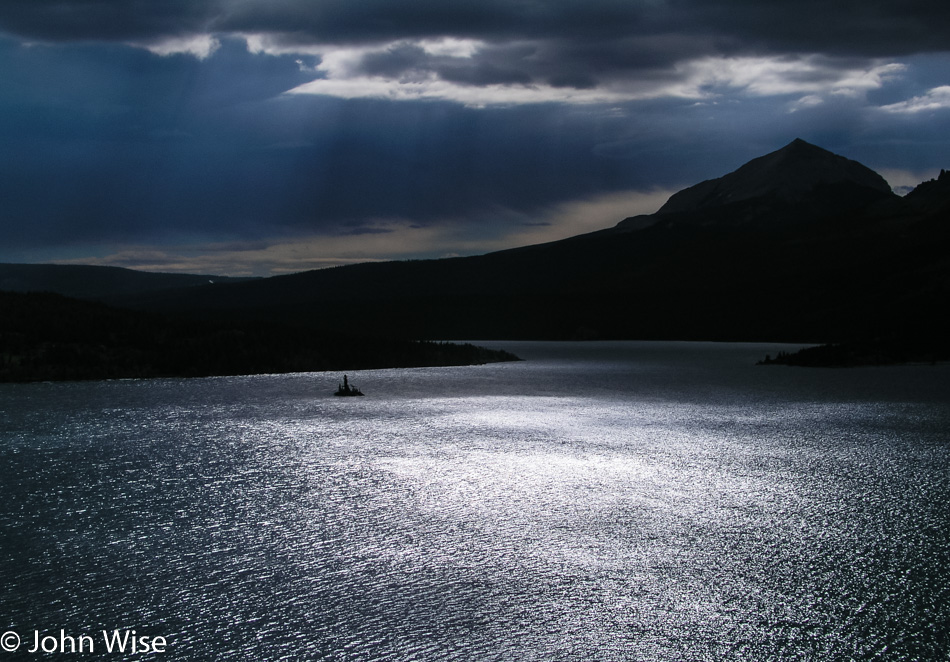
We must be getting close to the Sun as its reflections are becoming ever more impressive. If I’m not mistaken this is Saint Mary Lake.
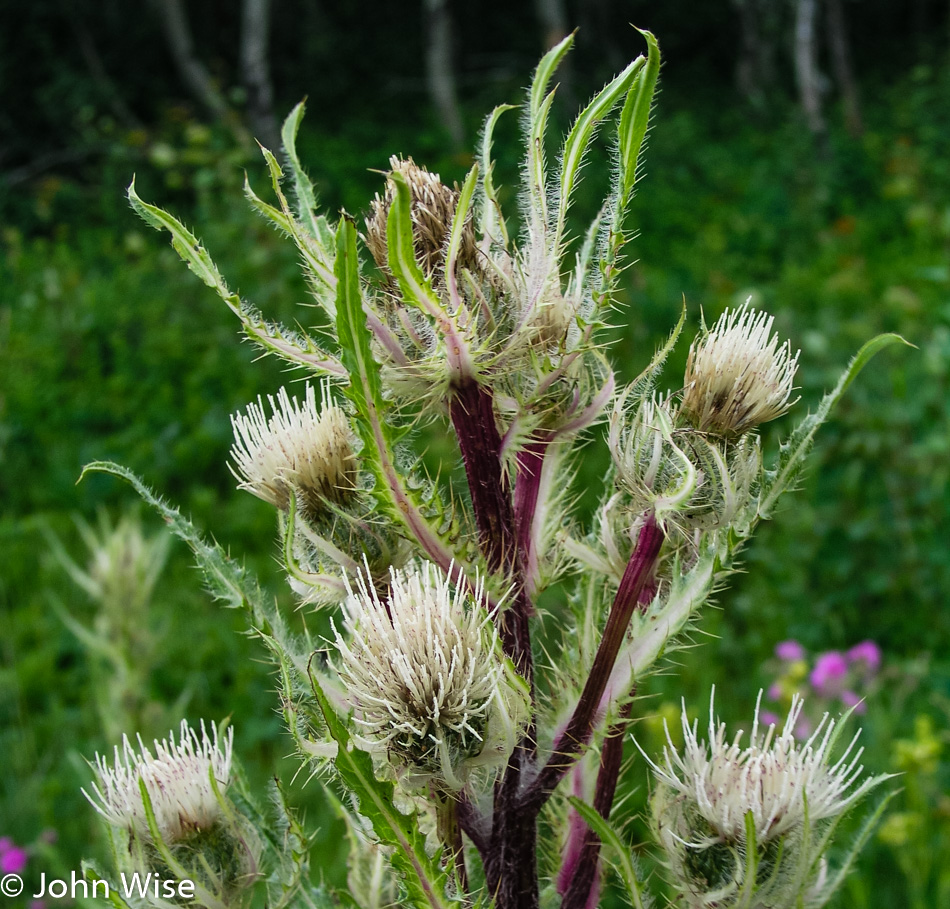
Some will stop for squirrels or bears; I’m all about the thistle.
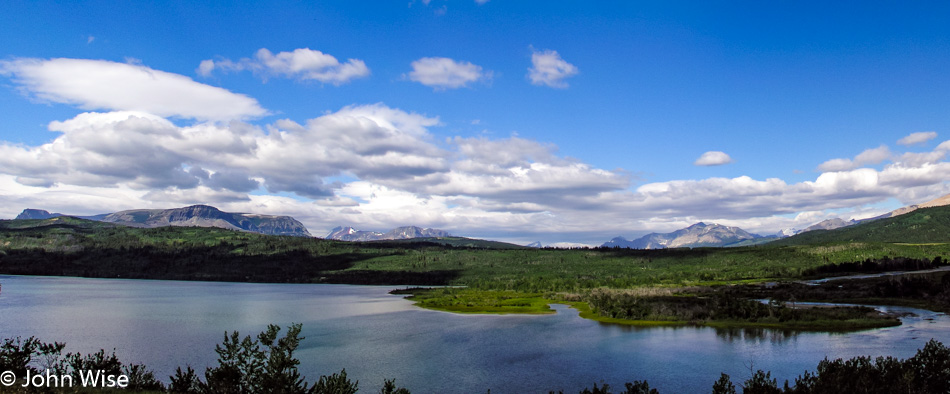
Maybe we are shortchanging Glacier National Park with a brief half-day visit?
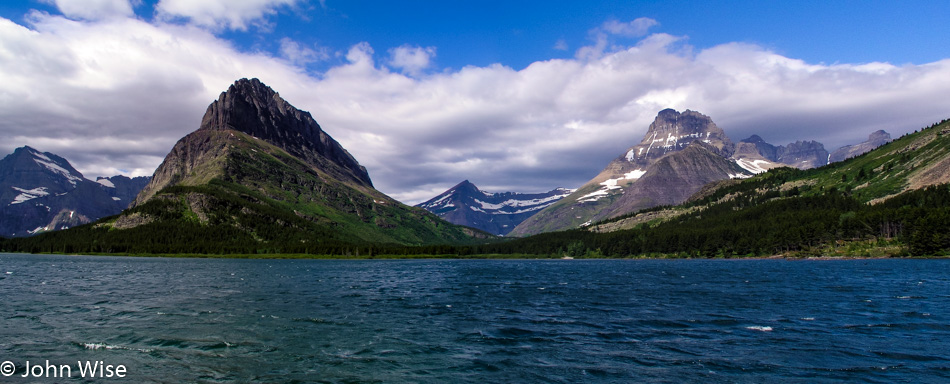
Swiftcurrent Lake on the Continental Divide Trail in an area called Many Glacier. Now I’m certain we will not be able to give this park its due. With such a short season, this park will be difficult to visit again.
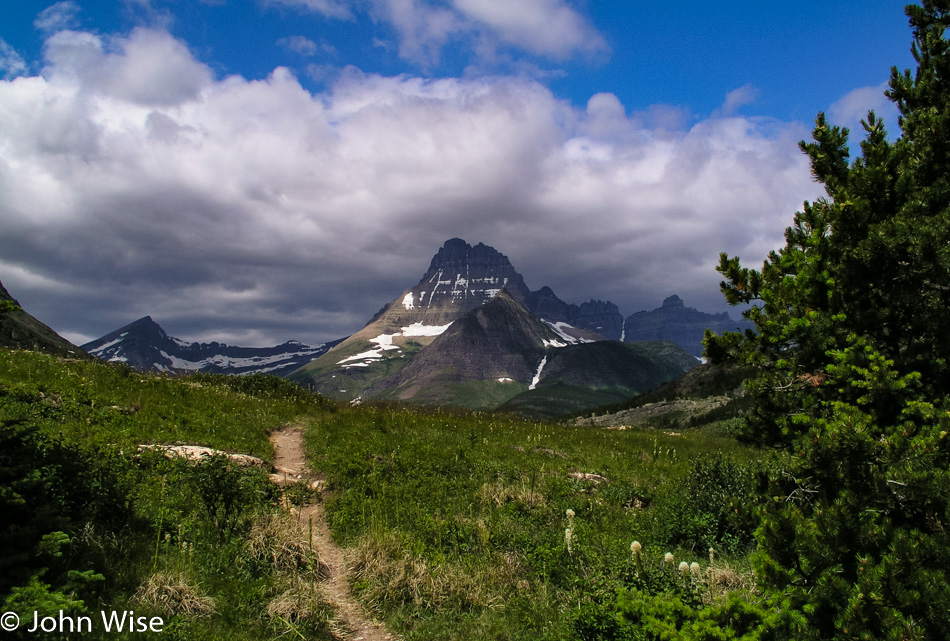
This park is a place where every corner and hillside offers a vastly different view of what you thought you were just looking at. It’s a bit of a fool’s paradise for photographers where getting lost in snapping more than you are experiencing is a real risk.
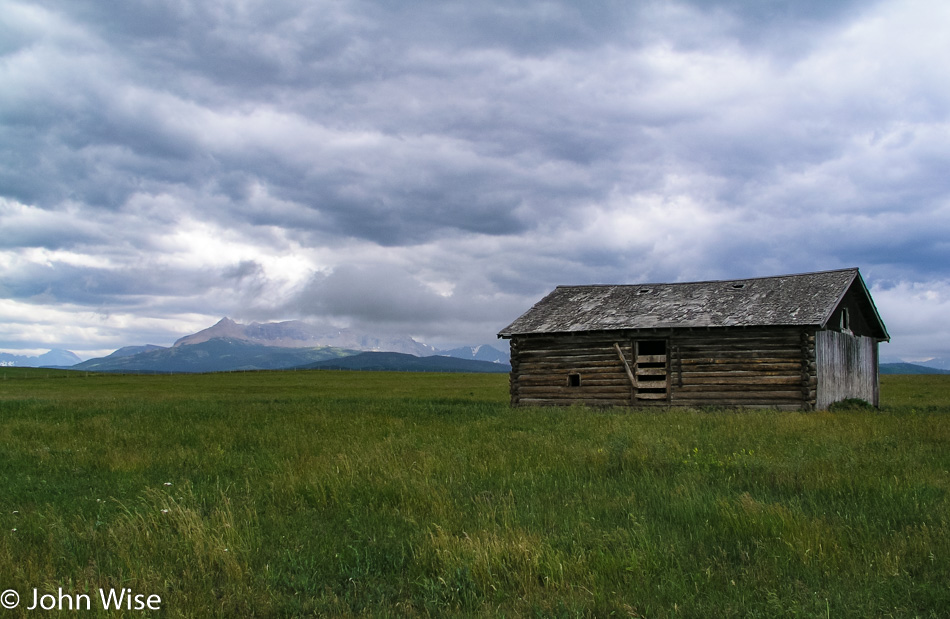
Sure, we took the obligatory photos at the Canada frontier sign and again at the “Welcome to Montana” sign for those traveling south, but those selfies were weak compared to this beautiful shot of a dramatic sky and weathered barn set in the green grass surrounded by cragged mountains. Matter of fact, we went so far that we were on the other side of the “Leaving America” sign, and upon seeing the long line of traffic to cross into Canada, we changed our mind about stepping into the Great White North and made a U-turn. We still have to go through U.S. Customs even though we’ve not left America, as the border control agents couldn’t see that we’d never left. So the obligatory moment of tension mounts as we wonder if our names have somehow shown up on some list that mandates that we are border bait for a cavity search. Fortunately, we had digital pictures that showed us just minutes before on the American side and had, in fact, not been in Canada, so after a minute or two with our friendly border agent, we were allowed to proceed.
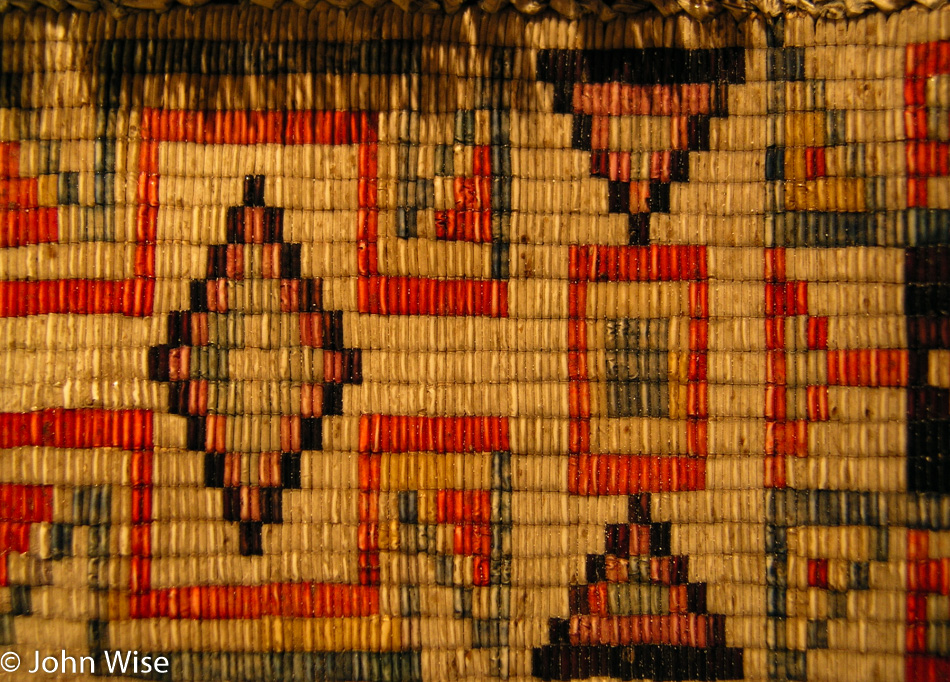
In Browning, Montana, we needed to stop in at the Museum of the Plains Indian to learn something more about the indigenous people that once enjoyed the lands of their ancestors without the interference of those who would rather they live somewhere else, such as on the moon. The contrast between the art of Native Americans who lived in Pueblos and those who lived on the Plains is stark.
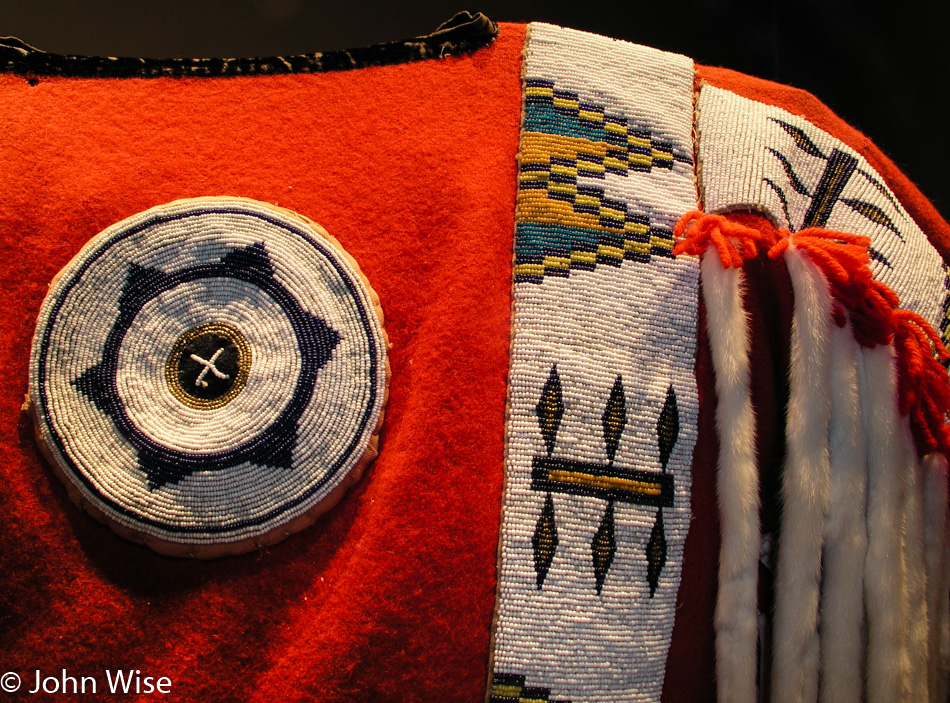
Both historic and contemporary arts and crafts are on display here. Too bad no in-residence Native Americans are sponsored here to help us visitors learn something more about the Blackfeet, Crow, Northern Cheyenne, Sioux, Assiniboine, Arapaho, Shoshone, Nez Perce, Flathead, Chippewa, and Cree cultures that are represented here.
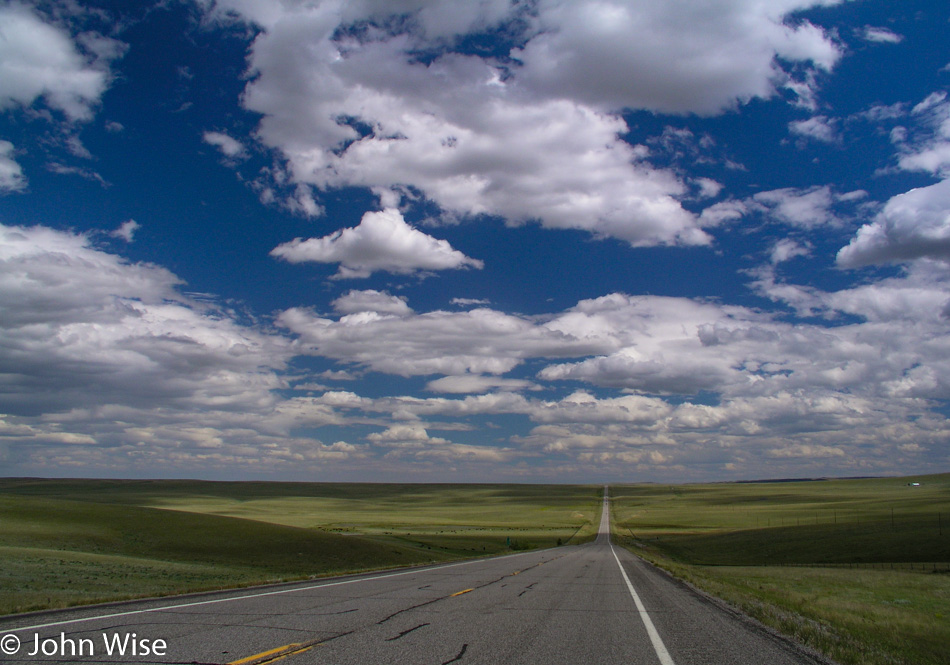
I see it, too, off in the distance, way out there….. Being out here on the Great Plains is a terrific contrast to the canyons, mountains, and forests that we traveled through on our way north.
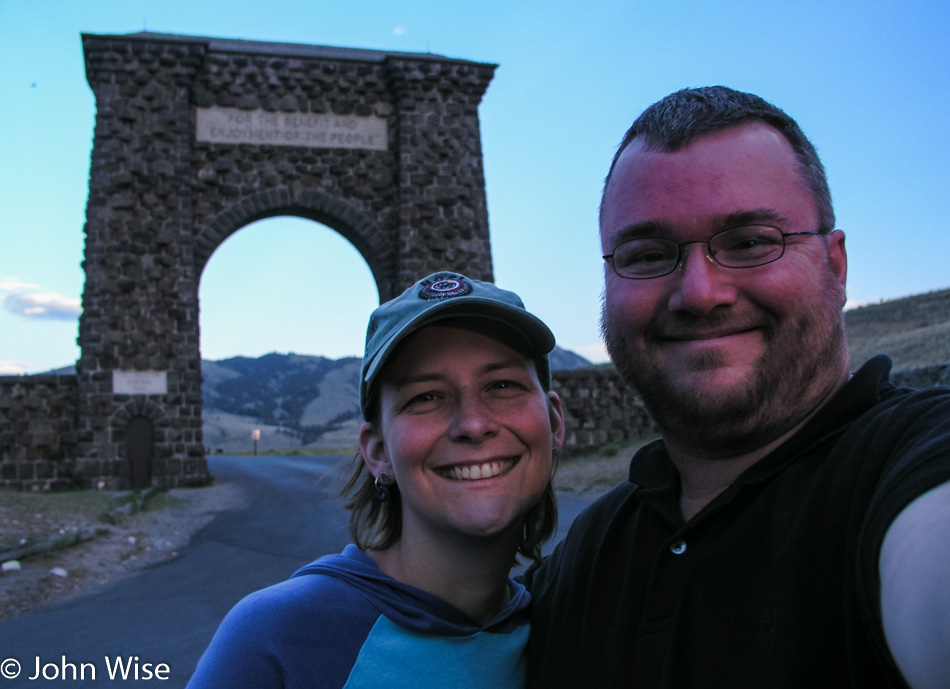
It’s YELLOWSTONE! Not just once in a lifetime, not even twice, but a third visit is in order, even if it’s a fraction of the time of our previous outings.
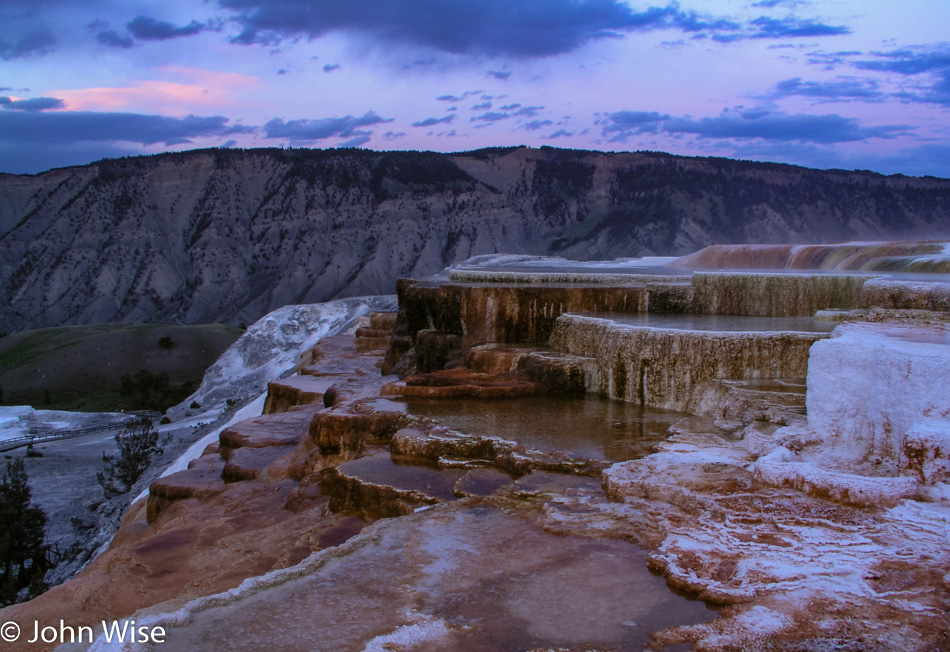
Fourth of July long weekend you can rest assured that finding lodging in the park would be a long shot. Even finding something outside of the park wasn’t that easy, and apparently, we got one of the last two rooms available in Gardiner, which is just outside the park over in Montana. Here we are at the Mammoth Hot Springs terraces, and this, at least for today, will have to be the extent of our time in the park as it’s getting dark.
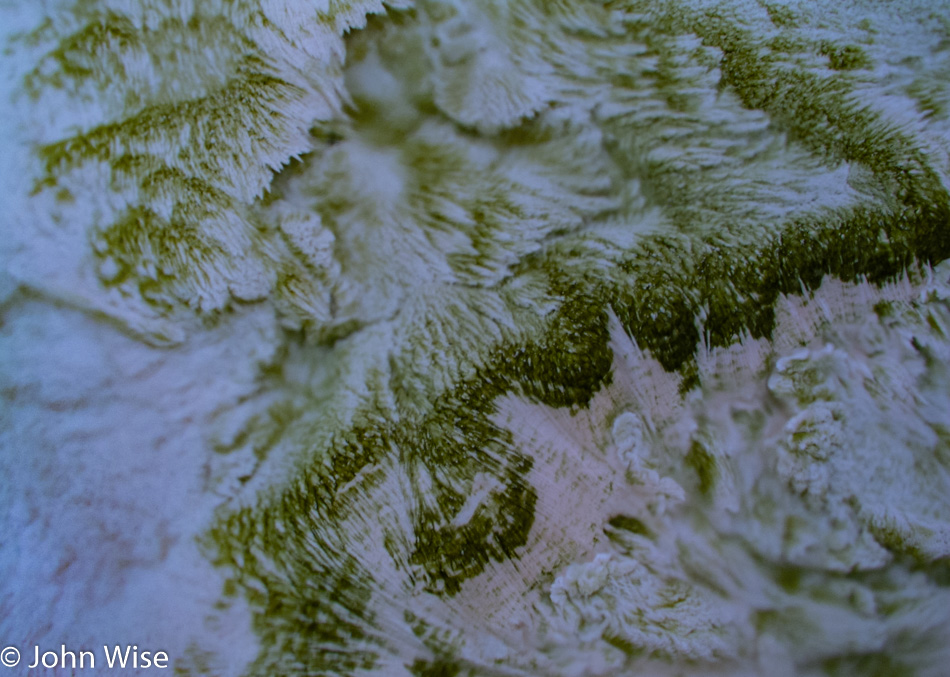
Hot water, minerals, and plants that thrive in this chemical soup may not be everybody’s cup of tea, hmmm, probably be a horrible-tasting cup of tea, come to think about it, but Caroline and I enjoy every single proverbial drop of it.
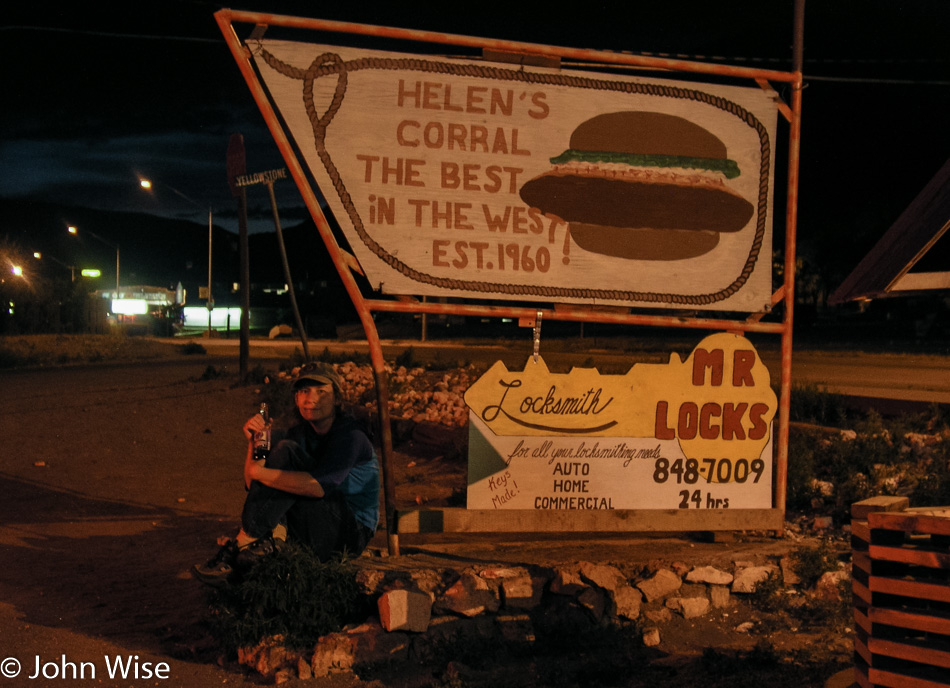
We ate bison burgers at this little joint called Helen’s Corral a few years ago and are enjoying it a second time while reminiscing about our previous visits to Yellowstone and that Caroline’s mom was here with us on our last excursion into this corner of America. Tomorrow brings nearly a full day of revisiting some familiar places. We can’t wait.
